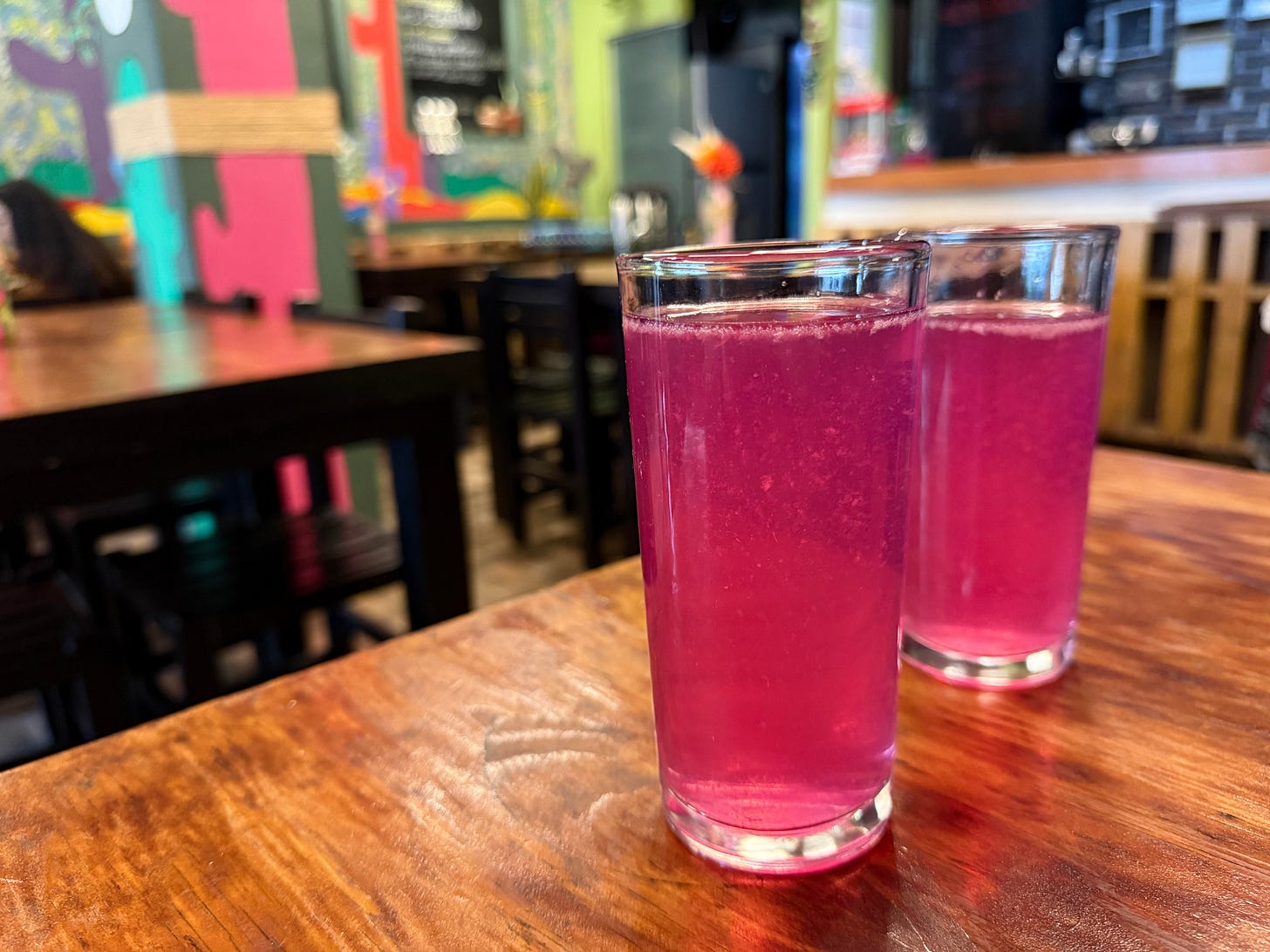Learning Spanish? In Mexico City, 'Agua' might not mean what you think it means
Don't be surprised if you order water but you don't get water. Give this delicious alternative a try.
On my first trip to Mexico City, I knew about 25 Spanish words, and 20 of them were the numbers 1 to 20. (Thank you, Sesame Street!)
Still, I wanted to use the little Spanish I had, so I confidently strung together three of those words:
“Agua, por favor.”
Instead of hearing the “Sí” I expected from the server, I got a string of Spanish words:
“Tomamos jamaica, horchata, limón, sandía, melón, y fresas.”
It turns out, “agua” means water, of course. But it’s also used as a shorthand for “agua fresca,” a popular drink you can find in street-side stands and restaurants throughout the city.
Aguas frescas are a blend of water, juice, and sometimes, a little bit of sugar. They’re a perfect mix—lighter and not as sweet as juice but more flavorful than plain water.
At a little cocina económica, you’re likely to get a pitcher of agua fresca in whatever flavor they’re serving that day.
Other places might have a couple of choices—jamaica (hibiscus flowers) and horchata (usually rice and cinnamon) are popular. Juice stands might offer a dozen flavors or more—we’re fans of sandia (watermelon) and melon (cantaloupe).
So, that’s all good to know if you want an agua fresca, but what if you just want regular water?
You have a few options:
Un vaso de agua: A glass of water. (Yes, you can drink the water at a restaurant. It’s bottled or filtered. Chilangos—those who live in Mexico City—don’t drink tap water.)
Una botella de agua: A bottle of water.
Agua natural: A bottle of still water.
Agua mineral or agua con gaz: A bottle of sparkling water. (This one may also be tricky, since the server may respond with various brand names, like Topo Chico or Penafiel.)
One of those phrases should help you get the drink you want!
More language learning tips
We’re still learning, but our Spanish has come a long way since then. Duolingo, private lessons on italki, podcasts, Latin music and Spanish captions are all helping.
Here’s how Duolingo is helping:







Thank you for these tips, great to know!